Epstein 2.0? The Ex-CEO Of Abercrombie & Fitch Accused Of Exploiting Men For Years
It's difficult to feel nostalgic looking at the Abercrombie & Fitch campaigns from our youth now that we know about the sinister acts that occurred behind the scenes.
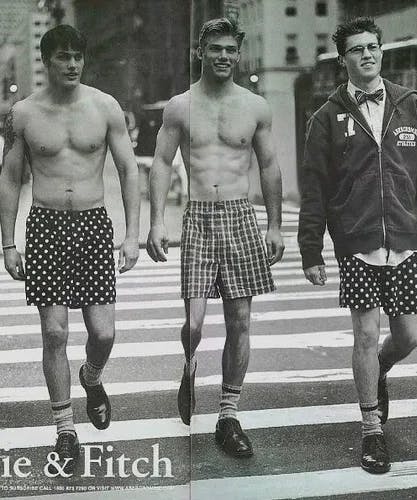
Abercrombie & Fitch’s former CEO Mike Jeffries and his partner Matthew Smith have been accused of sexually exploiting male models with the promise of modeling opportunities, as well as pressuring them to commit acts they weren’t comfortable with. Through a two-year investigation, BBC uncovered a “well-oiled machine” organizing sex events that could potentially be considered sex trafficking.
The iconic brand from our youth set itself apart in retail through a savvy marketing strategy that never fails – attractive people selling sex appeal. More specifically, conventionally attractive males lure you into their stores with their shirtless bodies and raunchy advertisements. The man behind the clever lean into gratuitous sex appeal is Mike Jeffries. Walking into these stores was like entering a nightclub, or more accurately, a day club. Stepping foot into A&F inundated you with blaring techno music and a stench of cologne so strong it could choke out a small cat, all while your parents hung over your shoulder because you couldn’t drive yet.
Half-clothed male models often guarded the storefronts like Miami Beach knights. It was all very eccentric, transparent, and transgressive. Men wanted to be them; women wanted to be with them. This brand and its sister store, Hollister, dominated the wardrobes of middle and high school students, as well as twenty-somethings desperate for an inoffensive wardrobe that was reliably trendy. However, the empire all came crashing down due to declining sales and an eventual rebranding. In 2014, Jeffries retired as CEO, parting ways with the company with a $25 million retirement package. As part of this retirement package, Jeffries was entitled to lifelong payments of $1 million per year.
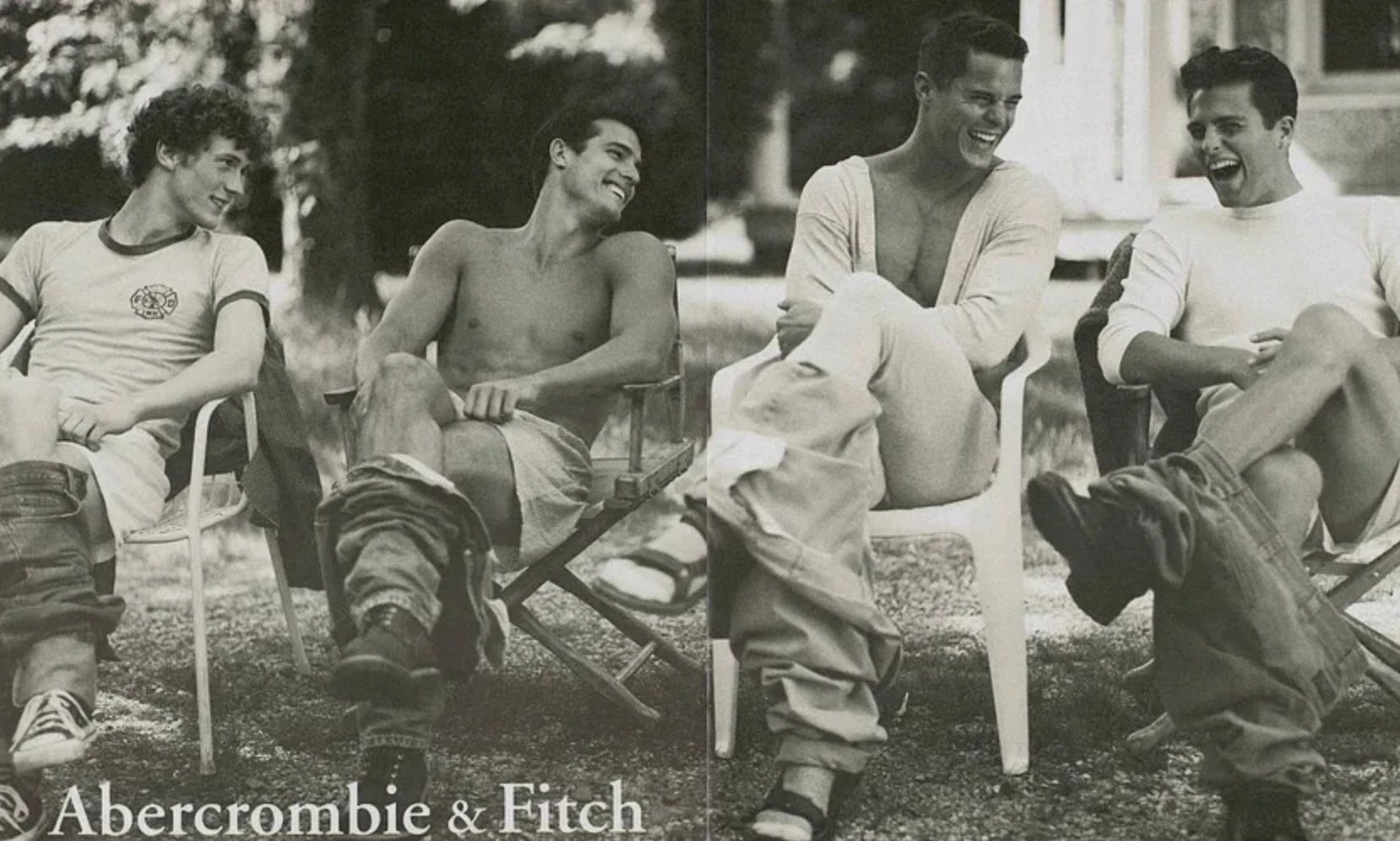
The Controversial Brand’s Countless Scandals
Abercrombie & Fitch, under its previous leadership helmed by Mike Jeffries, was plagued by controversy for years with a string of lawsuits claiming discrimination and a toxic work culture. A&F was open about their embracement of sexually alluring people who fit the image of traditional Americana. It was also open about its discrimination against people who didn’t fit the image. Jeffries’s controversial statements about the selection process for hiring candidates constantly stirred up backlash. From fat shaming and allegedly relegating minorities to the back stock rooms to selling graphic tees with offensive slogans, A&F was not marketing itself as an inclusive beacon of representation. Then again, neither were any other stores at the time, but A&F certainly wasn’t going to sugarcoat it.
A&F was very particular about the image they wanted to cultivate. One of Jeffries’ most famous quotes comes from a 2006 interview with Salon, in which he makes it clear that not everyone is welcome in the A&F brand: "In every school, there are the cool and popular kids, and then there are the not-so-cool kids. Candidly, we go after the cool kids. We go after the attractive all-American kid with a great attitude and a lot of friends. A lot of people don’t belong [in our clothes], and they can’t belong. Are we exclusionary? Absolutely."
Jeffries went further, deriding other more inclusive companies, saying, "Those companies that are in trouble are trying to target everybody: young, old, fat, skinny. But then you become totally vanilla. You don’t alienate anybody, but you don’t excite anybody, either.”
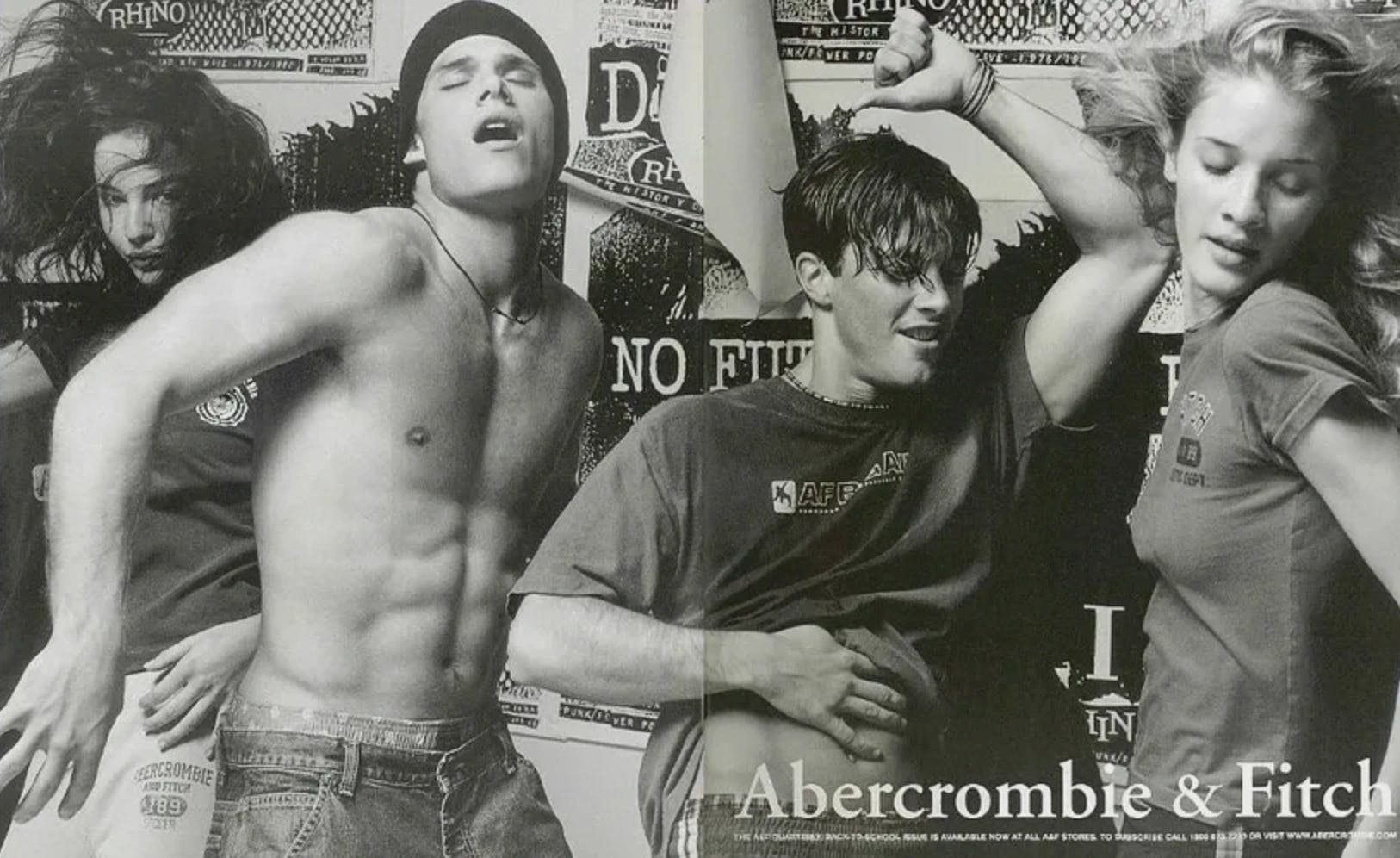
Abercrombie & Fitch Has a History of Weird Behavior
In recent years, thanks to the prioritization of representation above all else, a vocal minority has begun to idolize the former glory days of brands like A&F, Hollister, and Victoria’s Secret for being unapologetic about their vision and glorification of beauty and high standards. Only using beautiful thin models, supplying limited sizes, and refusing to pander to the woke moralizing of modernity has many longing for the nostalgic days of simpler times. However, whether you’re team representation or team aspirational beauty, a dark cloud has lingered over the brand’s history for many years – and it goes far beyond offensive political messaging.
In 2002, A&F was accused of marketing thongs with messages like “wink-wink” and “eye candy” to young girls in children’s sizes. Controversy surrounding the line caused them to pull the underwear from their stores and issue an apology, thanks to outrage from Christian and child advocacy groups.
Abercrombie & Fitch’s company plane allegedly required models onboard to adhere to a no-pants rule.
A former pilot for A&F, who was fired and replaced by a younger face, sued the company for discrimination on the basis of age. The company was no stranger to discrimination lawsuits, but the details in this one suggest a sinister atmosphere. The man accused the company of having specific, creepy rules to be allowed to fly on the company's plane, including requiring models onboard to adhere to a no-pants rule. The rule allegedly required models to wear only boxer briefs, polo shirts, gloves, and flip-flops. Another strange detail was that the pilot was ordered to play Phil Collins on all flights headed back home.
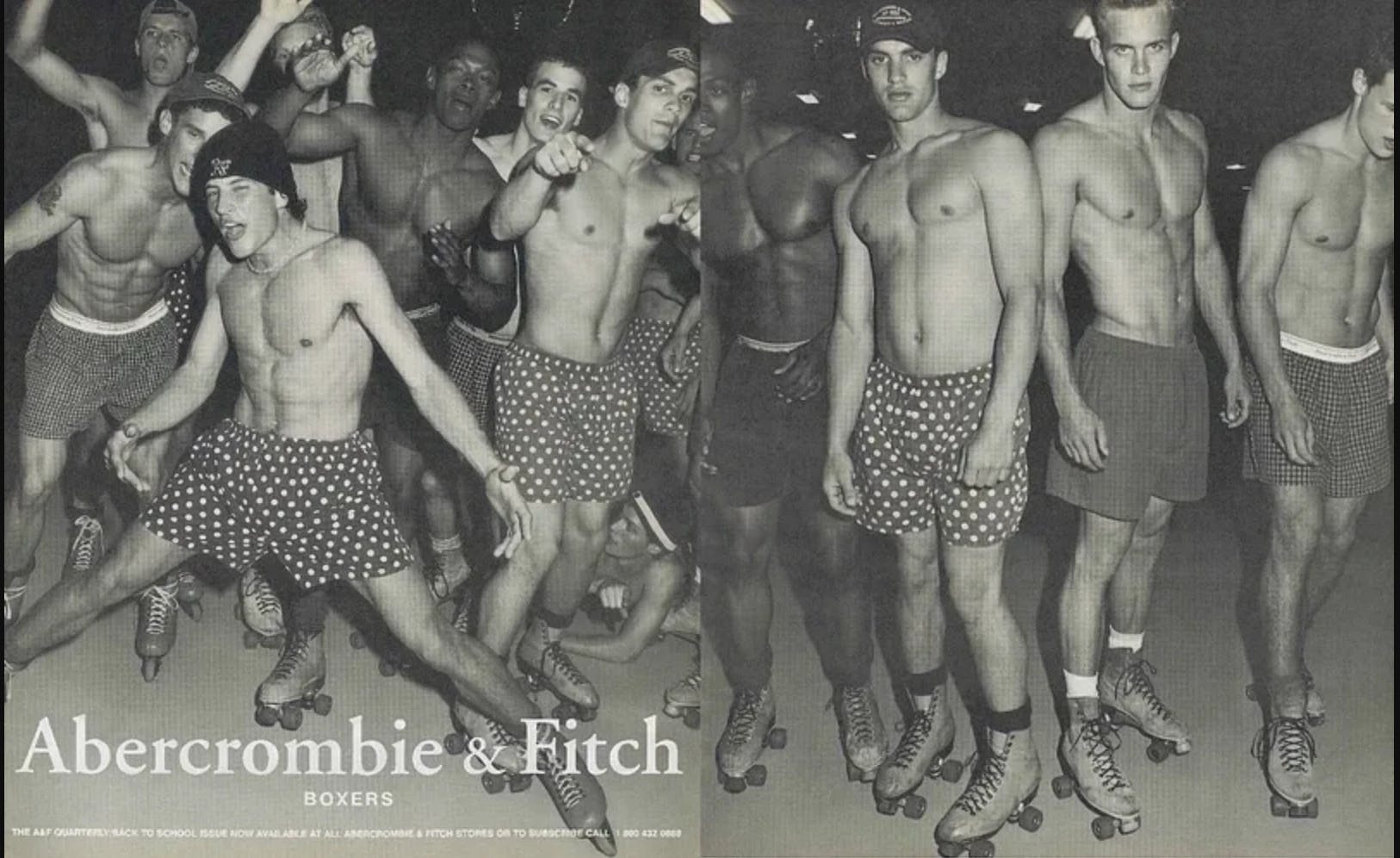
The Allegations Against Mike Jeffries and Matthew Smith
In October 2022, a two-year BBC Panorama investigation revealed allegations that Jeffries, his partner, and a third party, who is alleged to have been a middleman, lured male models into sex parties where they were exploited and taken advantage of in exchange for career opportunities. Eight men accused the ex-CEO and his partner of hosting sex parties in cities in the U.S. and around the world, where male models were recruited for jobs in exchange for sexual favors from 2009 until 2014, when Jeffries left the company. Many of them expressed feeling exploited or abused at these parties. Models claimed they were recruited by a middleman, who BBC identified as James Jacobson.
Half of the men accused Jacobson of luring them to these sex parties under false pretenses, being misled about the nature of the parties. Some of them claimed they were lured there under the guise of modeling opportunities and that sex was never mentioned. Other men claimed that, while they knew the parties were sexual, they were misled about what was expected of them. 23-year-old Dave Bradberry said an agent introduced him to Jacobson by describing him as the gatekeeper to “the owners” of A&F but insisted there was no reference to sex in this conversation. Bradberry claims that, upon their meeting, Jacobson suggested that A&F's then-official photographer Bruce Weber (since disgraced on sex trafficking and molestation allegations) should take his picture. Bradberry said, "Jim made it clear to me that unless I let him perform oral sex on me, I would not be meeting with Abercrombie & Fitch or Mike Jeffries." Admitting he should have seen the incident as a red flag, he chalked up the ordeal as an unsavory interaction with a creepy old dude he assumed he wouldn’t see again.
After accepting an invitation to a daytime event at Jeffries' Hamptons home, Bradberry said Jacobson handed him A&F gift cards and advised him to use them to buy an outfit, which made the task feel more official and legitimate. Bradberry said he understood Jeffries to be a powerful man who could make things happen for his career. After speaking to Jeffries and Smith about his aspirations to be an A&F model, he claims Jeffries held poppers (disorienting drugs) under his nose and later had sex with him. The other men who attended these parties said Jeffies and Smith would engage in sexual activity with about four different men or direct them to have sex with each other. They would then be rewarded with thousands of dollars in cash. All of these men said they were pressured to sign a nondisclosure agreement without sufficient time to understand what they were signing.
Bradberry described an atmosphere of intimidation, with these parties taking place in secluded locations, monitored by staff adorned in A&F uniforms (their supervision was conducted even during sex acts and they handed out the money), and pressure to sign NDAs. The domestic staff that worked in Jeffries’ home in the Hamptons said they were told to leave the property each Saturday afternoon for several years and believed something strange was going on. They explained they understood the reason they were ordered to leave was because their boss was having "playtime."
An anonymous man going by the name Alex was a dancer recruited for an event with the understanding stripping would be involved. However, he claimed Jeffries “took advantage of people in a very vulnerable point in their life, especially when they're around these big cities, coming from small America," and described the former CEO as the "kingpin." Alex, like the other men described, was brought to the event under certain pretenses and then suddenly pressured to perform sexual favors; they performed these acts without objection, but with the implication that there would be consequences professionally if they did not perform them. Alex flew to Marrakesh for another event a few weeks later as a dancer again, when he said Jeffries began to kiss him. Feeling uncomfortable, Alex said he hid in a back room and fell asleep. Upon waking, he claims there was a condom inside him, and he suspects that the champagne he was given earlier was spiked. Putting the details together, Alex said, “I think there is a very good possibility I was drugged and raped. I’ll probably never be able to know for sure what happened.” He later was diagnosed as HIV positive and wonders if this is where he contracted it.
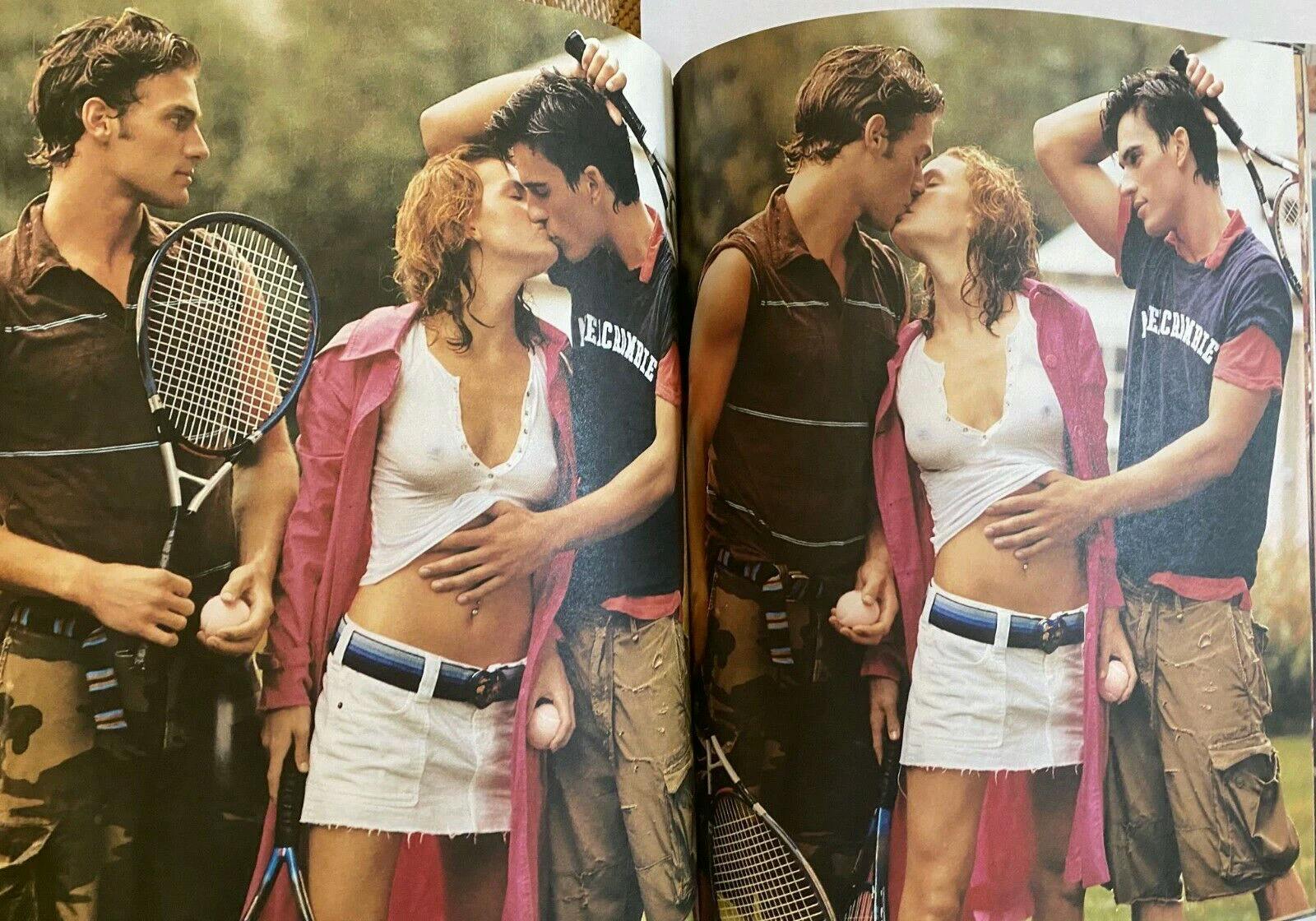
Why This Calls for a Sex Trafficking Investigation
The BBC investigation reveals what they describe as a "well-oiled machine" organizing sex events for Jeffries, which may fall under sex trafficking. The investigation describes a conspiracy where recruiters were hired to find men to attend these lavish sex parties, receiving between $500-1,000 from Jacobson for each referral. The men describe Jacobson as the middleman in charge of "casting" male models to perform sexual favors for Jeffries and his partner. He would forward them photos of these prospective models and "sexually audition" them, either requesting or offering oral sex before they could be introduced to the two powerful men. At the parties, a groomer was allegedly hired to shave body hair from the men attending, which they described as dehumanizing.
Court papers allege it's likely that over 100 men were sexually abused by Jeffries during his time as CEO of the company, where he manipulated driven young models with opportunities in exchange for sex at parties he held on a weekly basis. The filings also claim corporate money and resources were used to facilitate a sex trafficking venture, which could hold the company accountable for Jeffries's and his partner's sexual escapades. However, A&F distanced itself from Jeffries and released a statement saying they are "appalled and disgusted" by the allegations against their former CEO and that new leadership has transformed the company into a more "values-driven organization.” The company added that they have "zero tolerance for abuse, harassment or discrimination of any kind." The retailer has reportedly suspended Jeffries’s retirement payments and has hired an outside law firm to independently investigate.
Quid quo pro sex is sexual harassment that breeds a hostile work environment and is illegal on the federal level and in many states.
Former U.S. prosecutors Brad Edwards and Elizabeth Geddes are calling for an investigation to determine if these allegations warrant sex trafficking charges. Many of the accusers said they were lured under false pretenses and surprised with unsavory sexual expectations, which they complied with in silence but felt taken advantage of. Then, they kept returning to future events. Why is this? This is the complicated nature of these sorts of allegations. It seems uncontroversial to say the acts described in these allegations are certainly of a quid quo pro nature. However, determining if they count as sex trafficking will prove difficult. Edwards, one of the civil lawyers calling for a sex trafficking investigation, said, “There may have been evidence of coercion for some of the men, whereas others might not have felt the coercive tactics.” He added that the two men at the top of this hierarchy could argue that the men involved were consenting adults, especially since many of them describe in their allegations that they never resisted or voiced their discomfort.
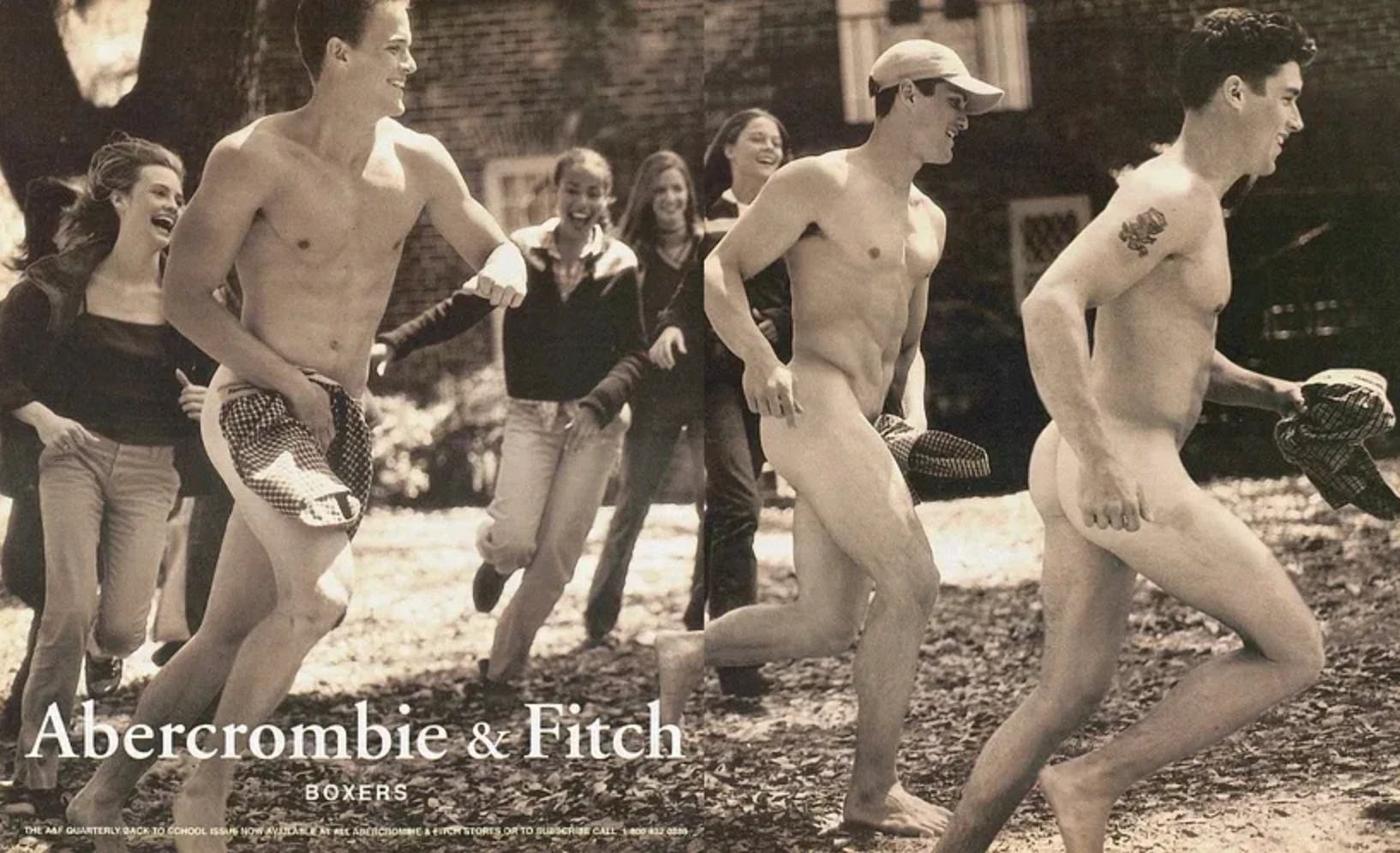
The fact that some of these men had engaged in commercial sex in the past could also be used to cast doubt over their discomfort. While Edwards warned that there is a very high burden of proof for prosecutors, he insisted that federal prosecutors look into this case. Fellow federal prosecutor Geddes echoed Edwards' sentiments, saying, "There's certainly an argument that these young men were subjected to potential coercion. I think there are grounds for a prosecutor to open an investigation and look closely at this conduct to determine if a criminal prosecution is warranted."
While Jeffries and Smith avoided responding to comments when requested by news outlets, Mr. Jacobson, the accused middleman, responded with a statement through his lawyer. Jacobson expressed offense at the suggestion of "any coercive, deceptive or forceful behavior on my part," adding that he also had "no knowledge of any such conduct by others." The agent claimed any encounter he had was fully consensual and said, "Everyone I came into contact with who attended these events went in with their eyes wide open."
Models, actors, dancers, and so on commonly voice the belief that they had to commit acts they were uncomfortable with or that even overtly repulsed them for the sake of advancing their careers. They fear saying no will come with consequences. But this is a trap. Quid quo pro sex is sexual harassment that breeds a hostile work environment and is illegal on the federal level and in many states. Examples of quid quo pro harassment include implying that a worker needs to perform sexual favors in exchange for a job they are seeking to be hired for, to get a promotion, to get a raise, to avoid being fired or laid off, or the threat of being fired as a consequence of ending an intimate relationship with your employer.
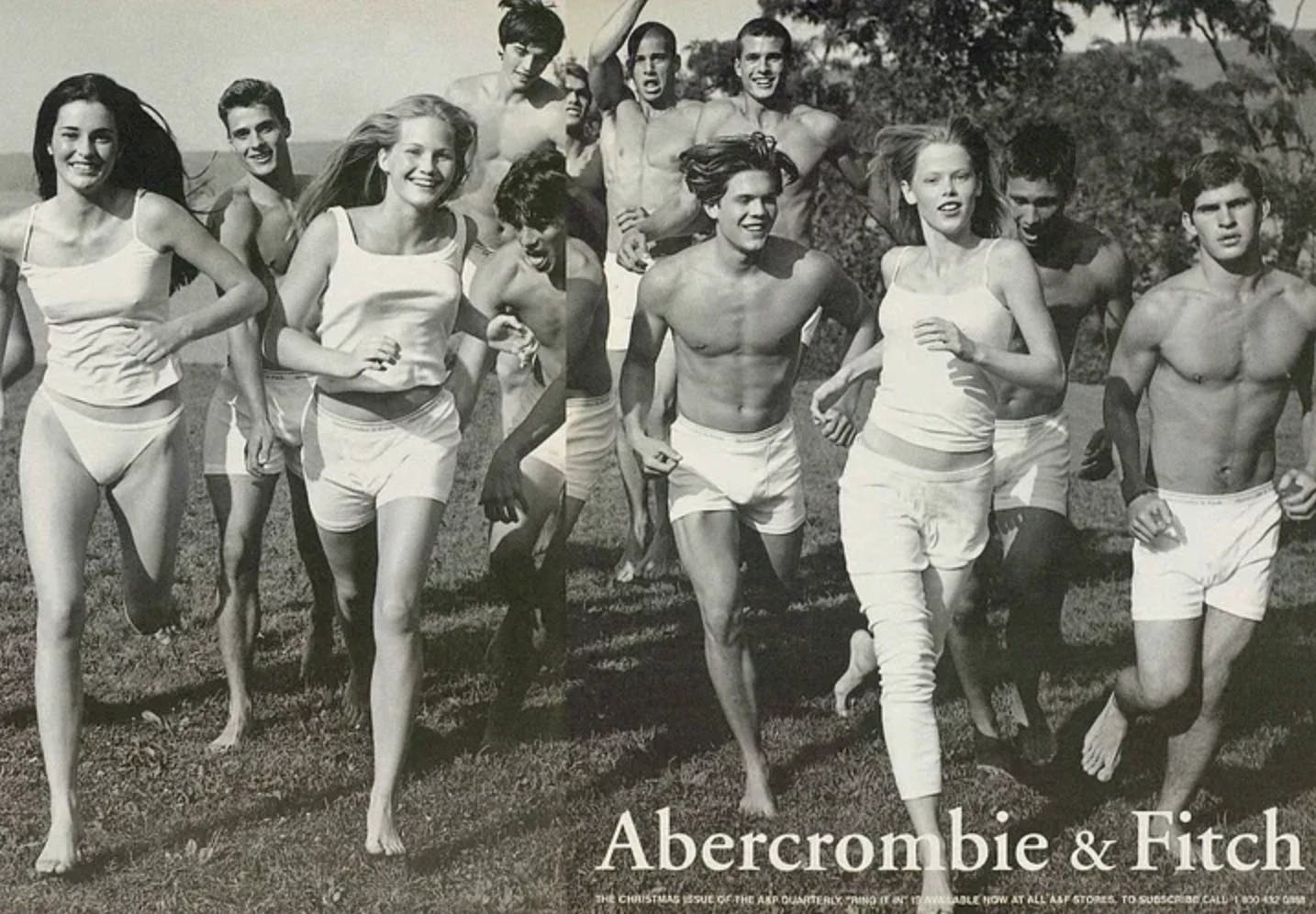
Closing Thoughts
Quid quo pro sex within the entertainment industry and debauchery at wild sex parties is not unheard of. Models and entertainers need to be more adequately educated on how to advocate for themselves to avoid exploitation. One of the common denominators between this story and the evergrowing list of Hollywood sex scandals is the gray area of what’s permissible, what’s criminal, and what’s immoral.
If you have to ask, there’s probably something wrong. It’s better to say no and eat the consequences than the alternative. It may cost you career opportunities, but a career built on sexual favors is not one you want to secure anyway.
Support our cause and help women reclaim their femininity by subscribing today.